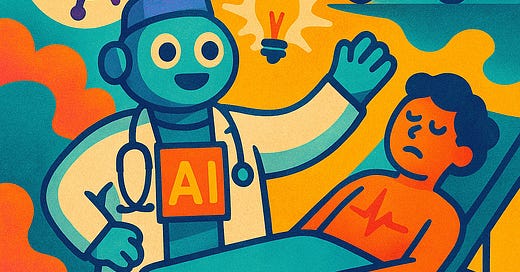Could AI's integration into healthcare transform how we diagnose rare and emergency diseases?
The recent article titled MetaGP: A Generative Foundation Model Integrating Electronic Health Records and Multimodal Imaging for Addressing Unmet Clinical Needs, presents a groundbreaking AI model designed to enhance medical diagnostics. The authors introduce MetaGP, a generative foundation model that integrates over 10 million electronic health records (EHRs), medical literature, and multimodal imaging data to provide support across a wide array of clinical applications. Unlike specialized models that focus on a single medical discipline, MetaGP aims to offer a more holistic approach, making it suitable for diagnosing rare diseases, identifying emergency conditions, and generating medical reports across diverse imaging modalities.
The article outlines the methodology behind the model, including its development using large datasets sourced from a variety of clinical environments. This pre-trained model is designed to address the limitations of traditional AI in healthcare, such as its lack of flexibility in handling multi-disciplinary diagnostic challenges. MetaGP shows significant performance improvements over previous models, particularly in the realm of rare disease diagnosis and emergency conditions. With a diagnostic score of 1.57 for rare diseases, MetaGP outperforms GPT-4, demonstrating accuracy comparable to experienced clinicians. The model’s application extends to multimodal data, where it generates medical reports for chest X-rays and CT scans. These reports have been rated as either superior or equivalent to those written by radiologists, further validating MetaGP’s clinical utility.
In its evaluation, the model underwent rigorous testing using both human and automated assessments. Its results were benchmarked against established models like Med-Flamingo and LLaVA-Med, proving its diagnostic accuracy across a variety of conditions. Notably, MetaGP demonstrated a higher diagnostic accuracy and a reduction in harmful recommendations, making it a promising tool for clinical decision support, especially for junior and mid-level clinicians who benefit from additional diagnostic guidance. The article highlights the model's potential in revolutionizing clinical practices, improving diagnostic accuracy, and reducing the risks associated with medical misdiagnosis.




